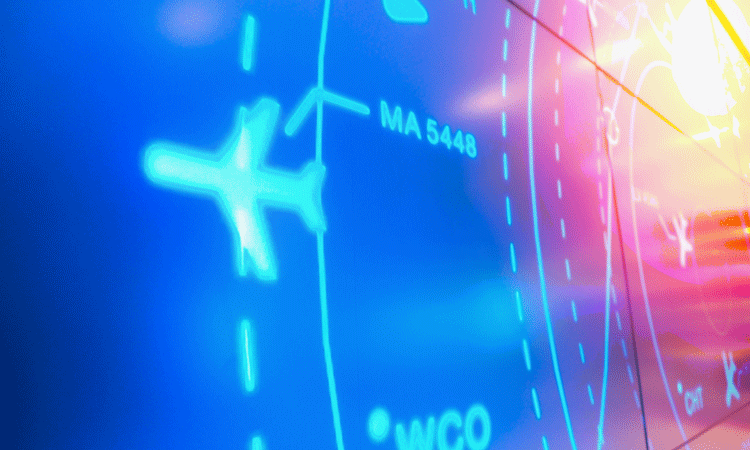Weak COVID-19 recovery of air travel jobs, especially tourism employment
Posted: 4 October 2021 | International Airport Review | No comments yet
Due to the major descent in international visitor traffic and slow COVID-19 recovery of the global aviation industry, 44.6 million air travel jobs, including tourism employees, are at risk.


The severe downturn in air traffic caused by COVID-19, followed by a slow recovery continues to put at risk up to 44.6 million jobs normally supported by aviation around the globe, according to new industry figures released at the Global Sustainable Aviation Forum. Despite a significant recovery in air traffic in some domestic and regional markets, the impact of very weak international visitor traffic is continuing to have a severe impact on tourism jobs supported by air travel.
Under normal circumstances, aviation and the tourism it facilitates supports 87.7 million jobs worldwide. Over 11 million jobs are within the sector itself, employed at airlines, airports, civil aerospace manufacturers and air traffic management. The near total shutdown of the system for several months, as well as the stop / start nature of the reopening, means that air travel will not recover to pre-COVID-19 levels until around 2024.
Haldane Dodd, Acting Executive Director of the cross-industry Air Transport Action Group (ATAG) said: “There have been signs of recovery in the aviation sector, although it has been uneven around the world. Direct aviation jobs will likely be 21 per cent lower at the end of this year (2021) than before the start of the COVID-19 pandemic. This is positive when compared to the same time last year (2020), when 43 per cent of jobs were estimated to be at risk. But the recovery has not been felt by the international tourism sector meaning that jobs supported by aviation more broadly are only half of the pre-COVID-19 level.”
“Uncertainty for travellers due to constantly changing restrictions has had a massive impact on the willingness of citizens and companies to plan journeys. Travel and tourism for leisure and business purposes do not simply provide the travellers with a nice holiday or important commercial opportunities, but support employment and economic development around the world. Asia to Pacific in particular has seen a significant drop-off in the benefits of air travel with almost 60 per cent reduction in economic activity supported, as many markets in the region remain closed to foreign visitors. Whilst some governments have provided support for the industry, that cannot continue forever. Through more coordinated and sensible vaccination and visitor entry requirements, destinations should be able to open up safely and regain this lost employment and income,” further added Dodd.
Key facts outlined in ‘Aviation: Benefits Beyond Borders’, include that in a normal year:
- Air transport supports 87.7 million jobs and $3.5 trillion in global economic activity,
- Over 11 million people work directly for the industry itself. Aviation jobs are, on average, 4.3 times more productive than other jobs in the economy,
- Air travel carries 35 per cent of world trade by value ($6.5 trillion worth in 2019), but less than 1 per cent by volume (61 million tonnes in 2019),
- Airfares today are around 90 per cent lower than the same journey would have cost in 1950 – this has enabled access to air travel by greater sections of the population,
- Scope of the industry: 1,478 airlines flew 33,299 aircraft on 48,000 routes between 3,780 airports in airspace managed by 162 air navigation service providers,
- 58 per cent of world tourists travel to their destinations by air.
Impact of COVID-19 (special report):
- Aviation-supported jobs potentially fall by 44.6 million to 43.8 million (-50 per cent),
- Direct aviation jobs (at airlines, airports, manufacturers and air traffic management) fall by 2.3 million (a 21 per cent reduction compared with pre-COVID-19 situation),
- The hardest impact is on the indirect and catalytic jobs supported by air transport: 50 per cent fewer jobs overall will be supported by air transport at the end of this year (2021) when compared to before COVID-19,
- Hardest hit is Asia to Pacific at -58 per cent, then Africa (-51 per cent), the Middle East (-47 per cent), Latin America and the Caribbean (-43 per cent) and EU (-40 per cent). North America (-34 per cent) has seen a recovery in domestic traffic to pre-COVID-19 levels, but is still impacted by a lack of foreign visitors due to travel restrictions. The domestic market in China is also near pre-COVID-19 levels.
Join our free webinar: Transforming Airport Security – Innovation, Impact, and the Passenger Experience
The landscape of airport security is undergoing a profound transformation, driven by evolving threats, technology, and passenger expectations. This webinar focuses on how AtkinsRéalis has been transforming security processes at some of the world’s busiest airports with smarter, more adaptive solutions.
Date: 4 Nov | Time: 14:00 GMT
REGISTER NOW TO SECURE YOUR SPOT
Can’t attend live? No worries – register to receive the recording post-event.
Related topics
Air traffic control/management (ATC/ATM), Airside operations, COVID-19, Economy, Funding and finance, Passenger experience and seamless travel, Tourism, Workforce
Related organisations
Related regions
Africa, Asia Pacific and Oceania, Central and South America, Europe, Middle East, North America


















